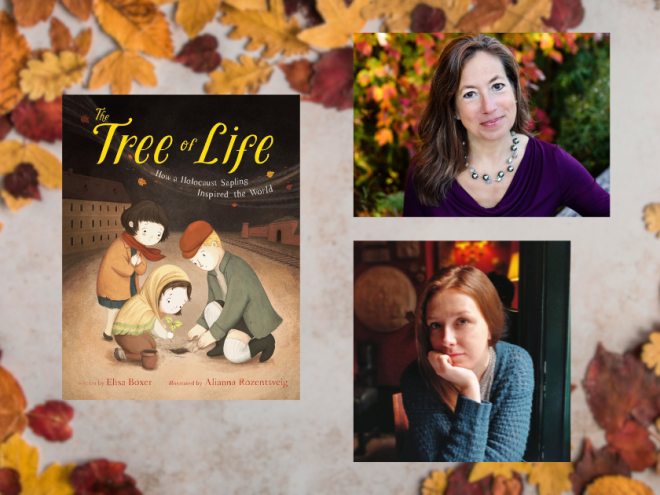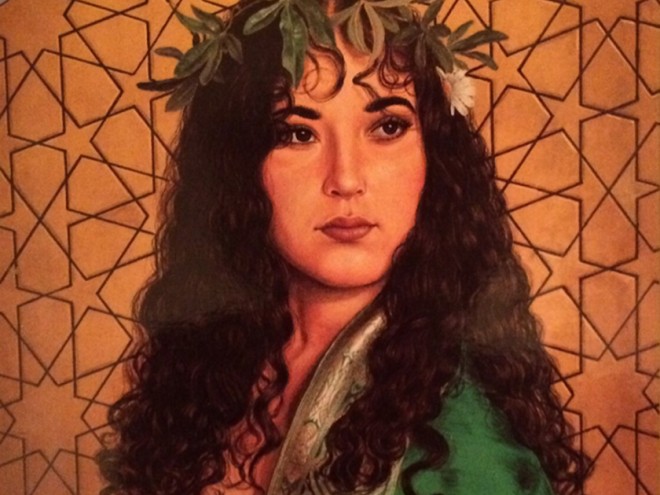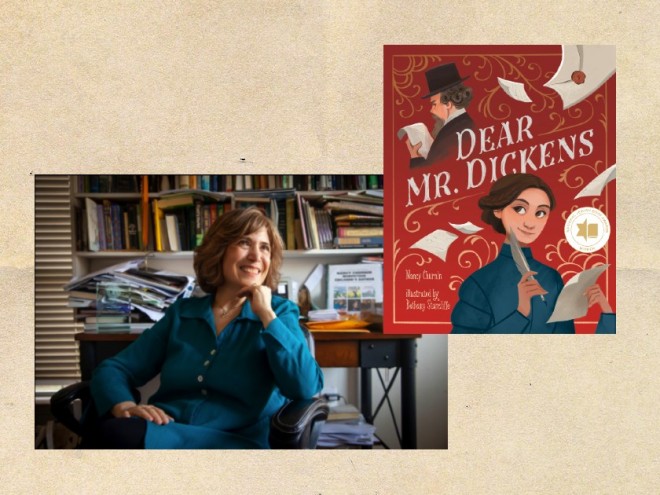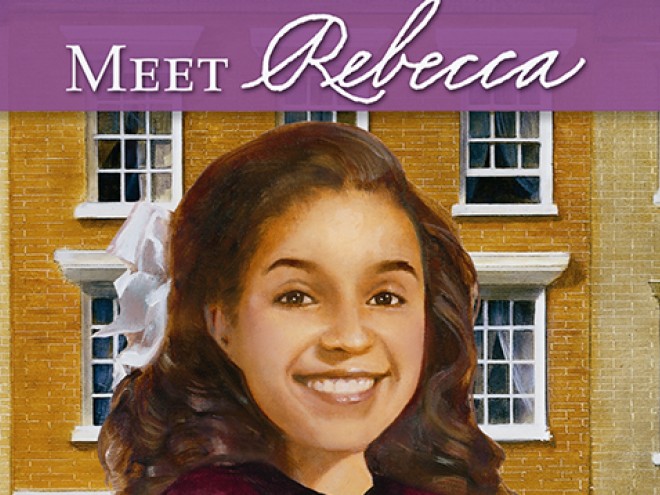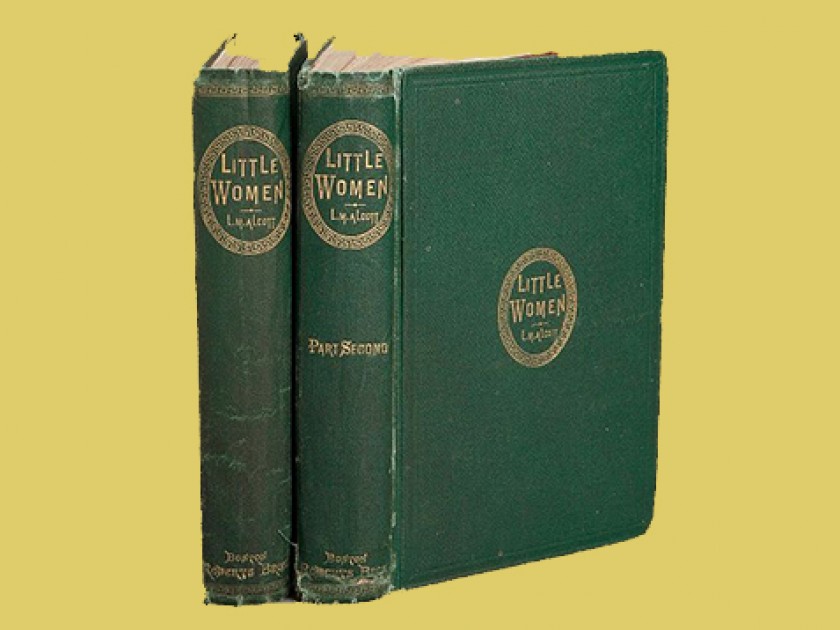
This year marks the 150th anniversary of Louisa May Alcott’s Little Women. Readers will recall the novel’s unforgettable female characters: domestic Meg, artistic Amy, spiritual Beth, and, of course, strong-willed and literary Jo. Recent works, including Anne Boyd Rioux’s Meg, Jo, Beth, Amy: The Story of Little Women and Why It Still Matters, celebrate Alcott’s book as an enduring cultural touchstone. But even those who’ve read Little Women may not recall the presence of Jews in the story. Three members of our tribe make brief appearances — so fleeting that, if you aren’t Jewish, they may seem inconsequential. None of them are major characters; none even speak. They are marginalized people playing limited roles in the world of the March sisters. Now would be a good time to bring these minor characters to center stage.
All of the Jewish characters in Little Women appear in the chapter “New Impressions,” an account of Amy’s experiences in Nice on her tour of Europe. The chapter begins with Alcott’s colorful description of the Promenade des Anglais, the broad, tree-shaded street which attracts both the city’s residents and its eclectic visitors: “Haughty English, lively French, sober Germans, handsome Spaniards, ugly Russians, meek Jews, free-and-easy Americans …” The Annotated Little Women, edited by John Matteson, provides a footnote to explain the “ugly Russians”: apparently, Alcott’s friendship with the Polish patriot Ladislas Wisniewski had made her suspicious of his Russian oppressors. Matteson doesn’t find it necessary to explain the rest of this litany of cultural characteristics. They are obvious. Americans were brash and uninhibited, Germans serious and scholarly, and Spaniards were exotically attractive. Jews were meek. They were stateless, and only recently emancipated by law in France, freed from ghettos and onerous legal restrictions. Still, one would have thought that in an edition comparable in size to a volume of the Talmud, Matteson might have remarked on this condescending adjective, and the historical conditions that made it normal to label Jews as such. Ironically, in an earlier chapter he apologizes for Jo’s offer to play an instrument she calls the “Jew’s harp,” assuring readers that “it has no particular connection to Judaism … Though Jo uses the term innocently, the name … is now sometimes thought offensive.” I’m impressed by Matteson’s sensitivity, though it seems selective.
The mention of the next Jewish character is really curious. Not presented previously in the narrative, he shows up in a casual statement as if needing no introduction. Amy has to collect her mail at her banker’s and, Alcott narrates, “At Avigdor’s she found the precious home-letters.” (She learns from one of these letters that her beloved sister Beth is not long for this world, a key plot point in the novel.) There was a family by the name of Avigdor, a Hebrew name, in nineteenth-century Nice, and banking was a profession associated with the city’s small Jewish population from medieval times. Again, there is no comment in the annotated edition to remark on this. Perhaps to both Alcott and her readers, the identification of Jews with money was obvious, and lent a realistic touch to her detailed portrait of a foreign city.
Complicating Alcott’s portrayals of Jews is the fact that she herself may have had Sephardic ancestry, something Matteson and other scholars have noted. Although the genealogy is not clear, Alcott’s maternal family, the Mays, seem to have referred to this possibility. In Marmee and Louisa: The Untold Story of Louisa May Alcott and Her Mother, author Eve LaPlante makes this claim, and Matteson also notes it in a somewhat unconvincing explanation of why Jo is called a “Sancho,” in allusion to the Spanish novel Don Quixote.
Yet Alcott’s ethnic background does not seem to have influenced her description of the most glaringly clichéd Jewish character in the book — a guest at the Christmas party held at Amy’s hotel. Rubbing elbows with the diverse crowd that includes a Russian prince, a Polish count, and an unranked German noble, is an associate of someone whose significance would be easily recognized by nineteenth-century readers: “Baron Rothschild’s private secretary, a large-nosed Jew, in tight boots, [who] affably beamed upon the world as if his master’s name crowned him with a golden halo.” While Matteson fills in the details, explaining that Rothschild’s secretary was Frank Romer, and even makes mention of his wife, artist Louise Goode Romer Jopling, he ignores Alcott’s description of Romer. But the stereotypes wrapped up in her portrait of the secretary are difficult to brush off. Emphasizing the character’s large nose effectively codes him as an outsider, while his “golden halo” seems to draw a parallel between his religion with the precious metal of wealth. His tight boots also emphasize his poor understanding of social cues in polite society; for all his wealth, he cannot choose proper footwear. Surely Alcott’s choice of words is relevant to Matteson’s scholarship, particularly since they form a summary of Jewish stereotypes of the era.
So, should Jews boycott Alcott’s work and campaign to have her removed from the canon? Of course not. It’s intriguing that Jews were present in the author’s mind, and that she brought them, even momentarily, into the rich and expansive canvas of her novel. Meg, Jo, Beth, and Amy will survive evolving standards of cultural and religious respect. But Avigdor, the Baron de Rothschild’s secretary, and those meek and unobtrusive Jews of Nice also merit our attention.
Image via Houghton Library, Harvard University/Wikimedia Commons
Emily Schneider writes about literature, feminism, and culture for Tablet, The Forward, The Horn Book, and other publications, and writes about children’s books on her blog. She has a Ph.D. in Romance Languages and Literatures.
